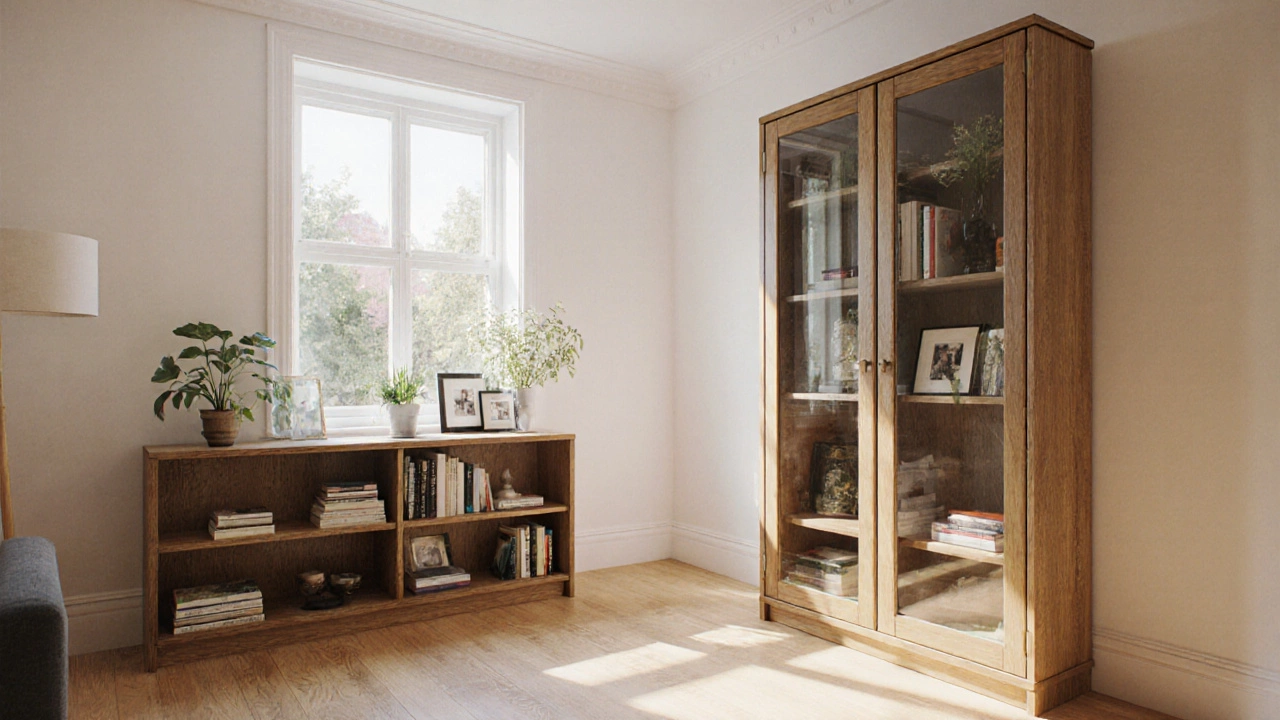Bookshelf Guide: Pick the Right Piece and Make It Look Great
A bookshelf is more than a place to stash paperbacks – it can shape a room’s vibe, add storage, and become a focal point. Whether you’re in a tiny flat or a spacious cottage, the right shelf makes a big difference. Below are practical steps to choose, place, and style a bookshelf without overthinking.
How to Choose the Right Bookshelf
First, measure the wall space you have. Leave a few inches on each side so the shelf doesn’t feel cramped. Next, think about what you’ll store. Heavy novels need a sturdy frame, often solid wood or metal, while decorative items can live on lighter floating shelves.
Height matters too. A tall, narrow bookshelf works well in a hallway or behind a sofa. A low, wide unit is perfect under a TV or as a room divider. If you love flexibility, look for adjustable shelves – you can raise or lower them as your collection changes.
Don’t forget the finish. Light‑stained wood brightens a dark room, while dark walnut adds drama to a minimalist space. Matte black metal fits industrial décor, and white lacquer blends with Scandinavian styles. Choose a colour that either matches or deliberately contrasts with surrounding walls and furniture.
Styling Tips for Your Bookshelf
Start with your books. Arrange them by height for a clean line, or mix sizes for a relaxed look. You don’t have to keep every spine facing out – a few vertical stacks add visual interest.
Balance books with decor. Insert a small plant, a framed photo, or a ceramic bowl every few rows. The rule of thirds works well: fill about two‑thirds of a section with books, then use the remaining space for accessories.
Layer textures. A woven basket at the bottom can hold blankets or magazines, while a metal sculpture adds a modern touch. Keep the colour palette simple – stick to 2‑3 colours to avoid a cluttered feel.If the shelf is against a wall, consider backlighting. LED strips behind the top edge create a soft glow that highlights displayed items and makes the room feel cozier.
Finally, think about accessibility. Place the books you reach for most at eye level. Keep decorative pieces you want to showcase on the middle or top shelves, where they’re easy to see but won’t get knocked over.
With these quick choices, your bookshelf becomes both a storage solution and a design statement. Whether you’re showcasing a vintage collection or a modern mix of art and plants, the right shelf and styling make a room feel finished.
Bookshelf vs Bookcase: Key Differences Explained
Clearly differentiate between a bookshelf and a bookcase, covering design, use cases, materials, pricing, and buying tips to help you choose the right storage furniture for your home.
MoreWhy People Arrange Books Backwards in Bookcases
Arranging books backwards in bookcases is a trend that combines aesthetics with functionality. This unique method hides clashing colors and creates a cohesive, neutral look. Some see it as an artful expression, while others appreciate the focus it brings to the environment. This approach is not just for looks; it can also aid in reducing visual clutter. Discover the reasons behind this design choice and how it benefits your living space.
More

